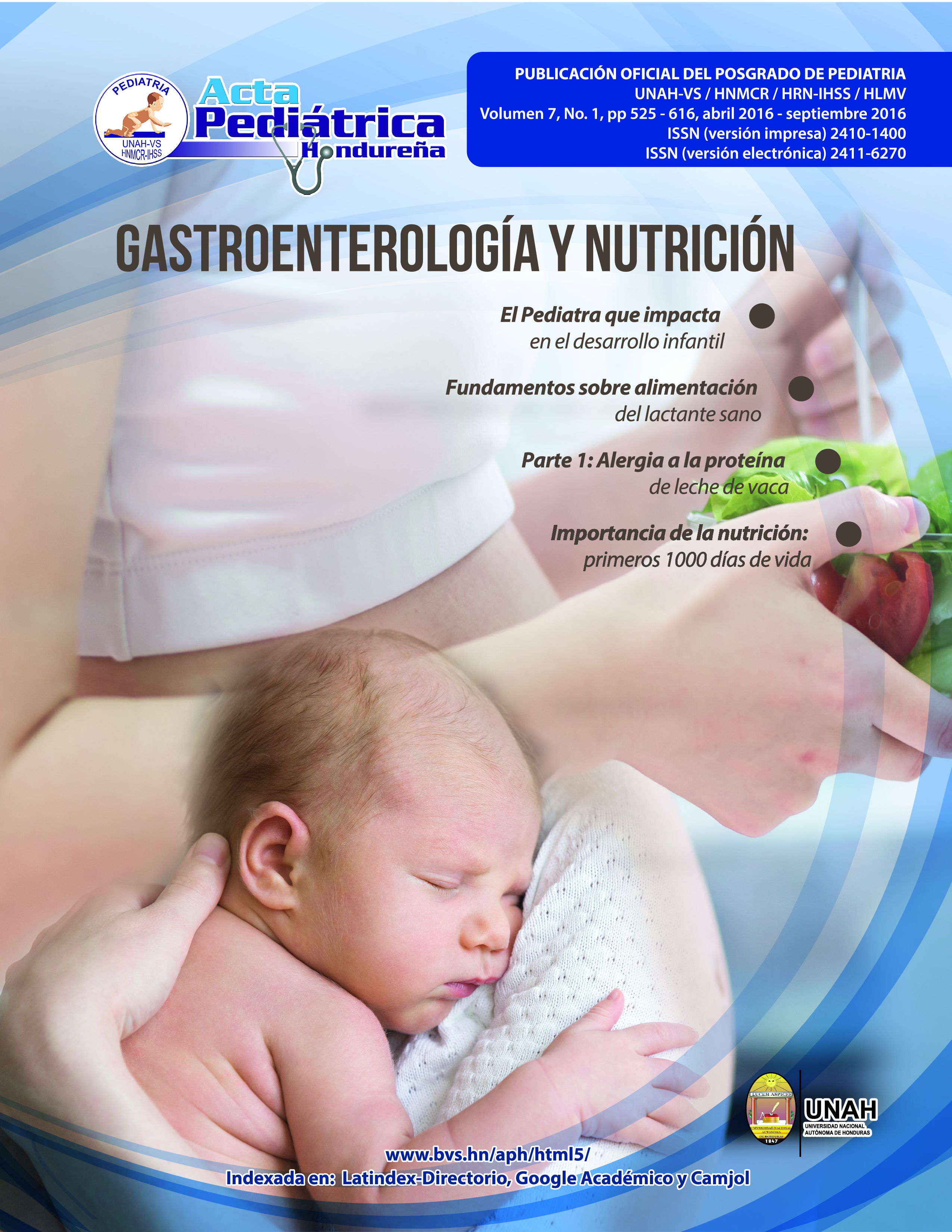Gastrointestinal Bleeding in Pediatric: Endoscopy Findings
DOI:
https://doi.org/10.5377/pediatrica.v7i1.6934Abstract
Background: Bleeding from the digestive tract is an alarming situation for parents and doctors. The causes vary in accordance with the age of the patients. Usually, gastrointestinal bleedings do not endanger life, but an approach is required that allows the doctor to make an early diagnosis and to evaluate the severity of the bleeding, as well as the selection of complementary diagnostic studies and Therapeutic. Objective: To identify the endoscopic findings in children with digestive bleeding at the Mario Catarino Rivas National Hospital (HNMCR), from June to August, 2016. Patients and Methods: a cross-sectional descriptive study. The study population was the total number of patients (n = 43) who underwent endoscopic study in the RMNHR during the study period. Results: 58% of those who underwent the endoscopic study are girls, 58% are adolescents. Endoscopic findings in upper gastrointestinal bleeding are erosive gastropathy (n = 20), erosion of the esophagus (n = 8), gastric and esophageal varices (n = 2 and n = 2 respectively). In colonoscopies, polyps were found (n = 6), and external hemorrhoids (n = 1). 66% of the patients studied are the first episode of digestive bleeding. Conclusion: gastrointestinal bleeding in pediatrics has a wide range of causes, from lesions in the digestive tract mucosa, treatable and curable, to chronic diseases from which long-term complications need to be avoided.
Keywords
Upper digestive tract bleeding, low digestive tract, endoscopic findings
Downloads
1010

